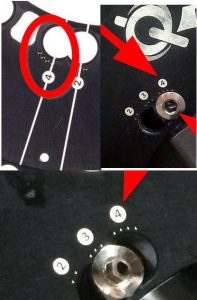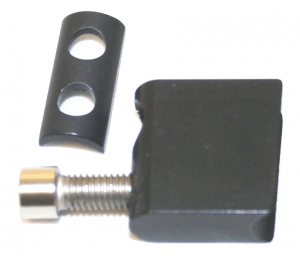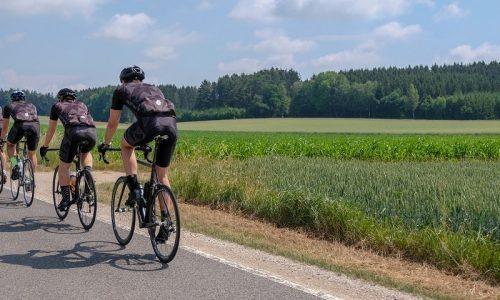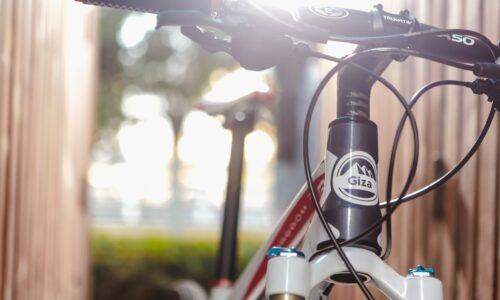
As a Bike Fitter and USA Cycling Coach, one thing I get asked all of the time is “what can you tell me about ROTOR Q-Rings and will they work for me?” The short answer is yes.
Q-Rings will work for most people, but, there are several exceptions which I will go over later.

For those that don’t know what a ROTOR Q-Ring is, it is an elliptical chainring that helps increase your performance by varying drive-train resistance during pedaling. ROTOR’s elliptical rings maximize the strong muscles and minimize resistance during the weaker part of the pedal stroke.
During one complete revolution of the crank, the cyclist experiences 2 ‘dead spots’. One is located at top-dead-center (TDC), the other at bottom-dead-center (BDC). This occurs at these 2 spots because you are not pushing anymore on the down stroke leg but not yet pulling up for the up stroke.
In other words, these 2 points in the pedal stroke are where you are transitioning from pulling to pushing muscles on the ‘upper leg’, and transitioning from pushing to pulling muscles on the ‘lower’ leg.
ANALYZING A PEDAL STROKE
Let me take a step back for a minute and discuss a concept necessary prior to understanding how the ROTOR elliptical rings work and that is Physical teeth v. Virtual teeth. For example, a 53 Physical Tooth (50T) ROTOR ring is a 50 Virtual Tooth (50VT) at the smallest part of the ellipsoid and a 56 Virtual Tooth (56VT) at its largest.
What this means is that if you took a 56T round chainring and layed it over top of the 53T Q-Ring, they would both be the same physical size at the largest part of the Q-Ring.
If you took a 50T round ring and layed it on top of the 53T Q-ring, they would both be the same physical size  at the smallest part of the Q-Ring.
at the smallest part of the Q-Ring.
What makes the ROTOR elliptical chainring really work is that as your leverage increases, your power output can increase. At TDC, the Q-ring will ramp-up from 50VT to 56VT at max power output (between 3-4 o’clock) and back down to 50VT at BDC.
The ROTOR ring increases its virtual teeth as your leverage and power output increase then will decrease as your leverage and power output decreases.
WHICH ONE IS BEST FOR ME?
Rotor makes 2 different elliptical rings (QXL & Q-ring) and a round (No-Q) ring, see below;

Why? Your legs have mass and the faster you spin the cranks, this mass helps you get through the dead spots a lot faster so that by the time your quadriceps are starting to push, you are already about 2 o’clock (max force is usually applied around 3:30).
WHEN WON’T IT WORK?
Since the ring is bolted onto the crank spider, it is non-variable, meaning that it is set or regulated to a certain index. This regulation is achieved by a session on the Computrainer to determine where maximum power is actually output. The ring is then indexed to maximize the cyclists power.
If the ring is setup for a racer who is doing a crit and sitting 99.5% of the time then wants to do a stand-up sprint at the end of the race, the cyclist won’t be able to take full advantage of the eccentricity of the ring.
In other words, when sitting, the cyclist’s TDC is about 11 o’clock so the ring will be regulated to maximize power applied at this position but, when standing, the cyclist’s TDC has been shifted forward to 12 o’clock or even maybe 1 o’clock.
THEN WHAT DO YOU RECOMMEND?
What we recommend for a crit racer is to use position #4 which is tailored for (a) the constant accelerations out of the saddle to get back up to speed and (b) the sprint. It also works pretty well for hard-hammering in the pack.
For  a crit racer, position #4 (index #4) is the best all-around option for this type of racing.
a crit racer, position #4 (index #4) is the best all-around option for this type of racing.
However, on a climbing bike, you can and should set the inner ring for climbing, and leave the outer for sprinting, since seldom will you be on the wrong ring and get caught off guard.
For general and faster paced club riding, the Q/QXL rings can still be custom indexed based off your natural pedal/power stroke. Bike Fitness Coaching can correctly set these up for you.
The photos to the right show position #4. This can be designated by 4 dots, 4 dots + the number 4 or 4 dots + #4 plus a line. Most ROTOR rings have 5 positions, 1-5. The new Shimano 110BCDx4 has just positions 2, 3, 4. Regardless, it is still best to get these regulated correctly by a good bike fitter.
WHAT IS THE Q-RING ALSO GOOD FOR?
There is a whole different way that the Q-rings can be setup. I call this ‘knee-savers’. The power curve of the Q-ring can be backed off and these rings can be used as knee savers. When setup correctly, they are actually easier on the knees than round rings.
I’ve recently had 3 customers come in for a bike fit. They are 70, 71, 72 years old respectively and specifically came to see me for a bike fit and for ROTOR Q-rings.
They wanted something that will help save their knees since, out here in SoCal, 70+ is still not too old to be able to still ride hard, and these gentlemen want to ride for many years to come. Their comments can be seen at http://bikefitnesscoaching.com/testimonials
SUMMARY
- Recommended progression – start with the Q-rings first. After a season of riding, update to the QXL. I do not recommend going from a round ring directly to the QXL.
- Indexing – in order for these rings to benefit you, they must be indexed to your pedaling style / power curve as well as the type of bike must be taken into consideration. For example, differing geometries. The triathlete sits more forward on a TT bike than a cyclist does on a road bike.
- Shifting
- Gear Choices – Shifting can be an issue since the front derailleur (FD) needs to be setup perfectly. Also, stick with recommended gearing, 50/34, 52/36, etc. Some who use hybrid gearing, 53/34 run into chain dragging on the FD cage, etc.
- Di2 shifts ROTOR rings better than mechanical. If using mechanical, I have found that throwing the FD shift lever harder helps with shifting.
- FD limit adjustments – readjust as specified by the manufacturer.
- Trick – If shifting or spacing is an issue, a trick is to use one of the QXL/Q-ring FD spacers (included
 with QXL, purchased separately with Q-Ring). For me, the small spacer worked like a champ allowing the FD to be tilted slightly tail up (thinner part of spacer on top, thicker towards bottom) which allowed the FD to be positioned perfectly for crisp shifting.
with QXL, purchased separately with Q-Ring). For me, the small spacer worked like a champ allowing the FD to be tilted slightly tail up (thinner part of spacer on top, thicker towards bottom) which allowed the FD to be positioned perfectly for crisp shifting.
- Setup – This is probably the most critical component and is divided into 2 main areas
- FD cage height above chainring – Setting to 1.0 mm seems to provide the best shifting
- Chain length – critical – Usually 1 extra link is required, especially when using the QXL ring.
These rings do seem to work as virtually every customer that has purchased them likes them, the caveat being that these rings need to be setup correctly.
So please stop by or contact me at [email protected] and we can discuss which ROTOR ring will best suit your needs, and/or we can put you on the Computrainer and index your rings correctly to maximize power or set them up as ‘knee-savers’.
Rick Schultz
USAC Level 2 coach, CBPT, CSI
Pro-Level Bike Fitter
[email protected]
949.606.2767

I have always enjoyed bicycling and, through a series of coincidences, became a Bicycle Industry Consultant and Product Tester. I test prototype products for companies and have published only off the shelf production products on biketestreviews.com.



 with QXL, purchased separately with Q-Ring). For me, the small spacer worked like a champ allowing the FD to be tilted slightly tail up (thinner part of spacer on top, thicker towards bottom) which allowed the FD to be positioned perfectly for crisp shifting.
with QXL, purchased separately with Q-Ring). For me, the small spacer worked like a champ allowing the FD to be tilted slightly tail up (thinner part of spacer on top, thicker towards bottom) which allowed the FD to be positioned perfectly for crisp shifting.
